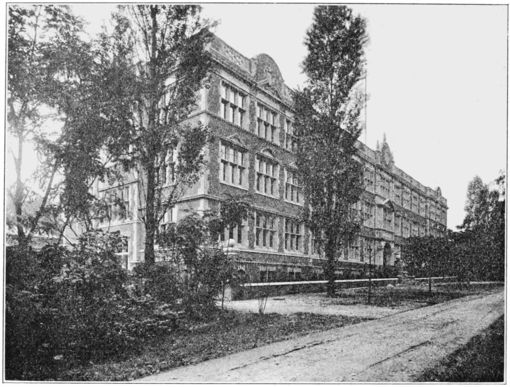University of Pennsylvania, shown in the accompanying illustration, is the largest and best equipped building in this country, if not in the world, devoted wholly to zoology.
The architecture is of early English Renaissance, with walls of red brick in a variety of shades trimmed with Indiana limestone. The front facade, facing the north, is 216 feet in length; the south wing connects with the vivarium erected in 1900. The form of the building and the large windows give ample light to all rooms. Excellent as are the architectural effects they have in all cases been adjusted to the needs of the scientific work. The unit system of construction has been followed, so that rooms are of standard size and partitions can be readily added or removed.
The large lecture room seats 327 students and the smaller sixty, while the laboratories may also be used for lectures. Ample space is provided for the library and for a synoptical museum, but duplication of the exhibition museums of the Academy of Natural Sciences was wisely avoided. The elementary work is confined to the first floor, with four laboratories for general zoology, leaving the two upper floors for advanced work and research. The basement contains rooms for breeding, constant temperature, photography and other purposes, the heat and light being supplied from a central station.
The United States would make unparalleled contributions to the advancement of science if these follow in proportion to the material equipment of its universities and government bureaus. But men are more important than their tools. It happens that of the great universities of the Atlantic seaboard the two—Harvard and Columbia—which lead all others in their zoological work are the only ones not having new laboratories. They will doubtless soon have them, but how much their investigations will be aided by the building, equipment and care of new laboratories is an open question. At Pennsylvania there is only one full professor of zoology. The interest on the cost of the building and grounds and the charge

